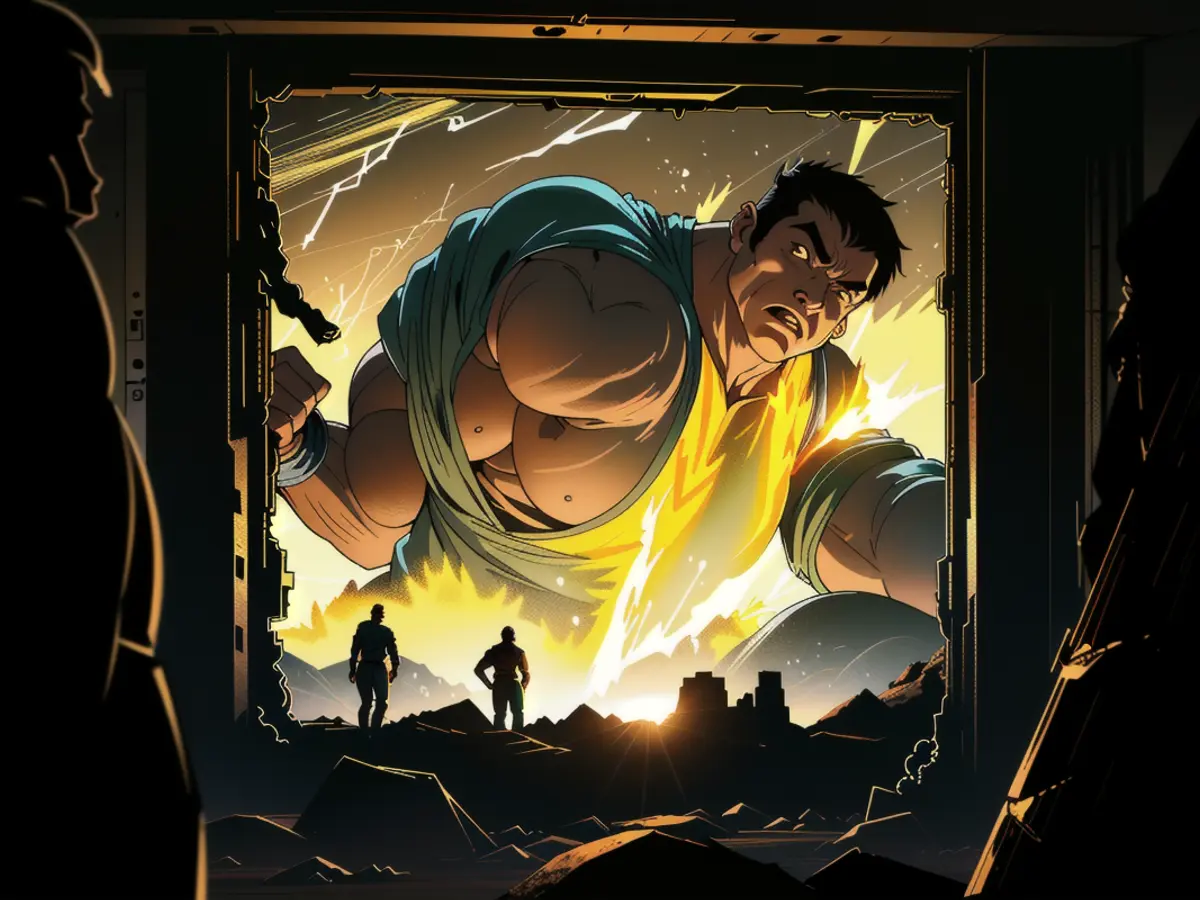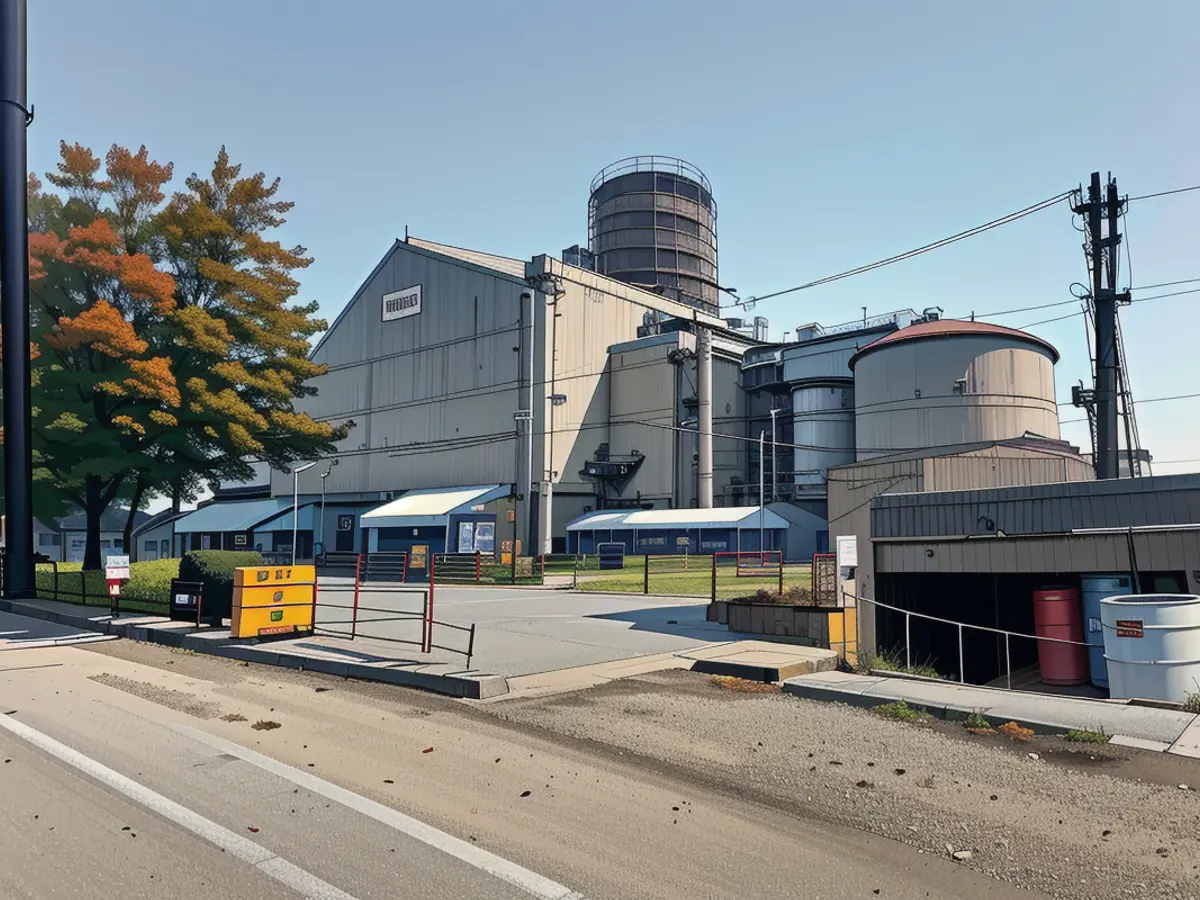The Destination of Big Tech's Accumulated Nuclear Waste Remains Unclear
In the small town of Wiscasset, Maine, population 3,742, there's a field safeguarded by armed guards. The field encloses a chain-link fence, which borders a slab of concrete. On this concrete slab, there are 60 cement and steel containers, housing 1,400 used nuclear fuel rods, remnants from a power plant that ceased operations almost 3 decades earlier.
These containers are brimming with nuclear waste. The locals aren't exactly thrilled about it, but there's no place else for it to go. The debate on how to manage America's nuclear waste remains unresolved, despite theoretical solutions and practical stalemates due to a prolonged political struggle. The country's increasing energy needs, coupled with tech giants such as Google, Microsoft, Meta, and Amazon planning nuclear expansions, indicates that there will be more nuclear waste than ever before.
Currently, nuclear waste is stored in stainless steel containers, sealed within concrete structures known as dry casks. Dry casks are generally considered quite safe, as long as they're undisturbed. Left undisturbed, they could potentially remain so for centuries.
However, the world isn't a constant entity. Climate change is causing concern, with wildfires, earthquakes, and rising sea levels posing a threat to these dry casks. Although a single or two dry casks being affected might not pose a significant problem, the growing number of them is cause for alarm.
© Photo by Gabe Souza/Portland Press Herald via Getty Images Aerial photographs taken in 2013 display the steel-lined concrete containers holding spent fuel assemblies at the old Maine Yankee site in Wiscasset.
Tech Giants' Nuclear Ambitions
America's nuclear waste is gradually accumulating. Policymakers rather than scientists find it a challenge. Other countries with nuclear capabilities bury their waste deeply underground in purpose-built storage facilities called deep geological repositories. America could follow suit. At one point, we even began constructing one. The obstacle? Nobody wants a large underground storage facility filled with nuclear waste in their neighborhood.
It's not hard to comprehend their reservations. The U.S. has a dubious background when it comes to waste management. For years, we stored waste in barrels and disposed of it by dumping it into the sea. The legacy of the Manhattan Project's waste still poses harm to people today. In South Carolina, radioactive alligators once roamed the Savannah River Site, where nuclear weapon components were manufactured. The Hanford Site in Washington state houses around 54 million gallons of waste that might never be decontaminated.
To meet Big Tech's escalating energy demands, we will add to this pile.
The year 2024 marked Big Tech's decisive step towards nuclear energy. Energy-hungry data centers and the increased use of artificial intelligence require more energy than ever before. To address this issue, Meta, Google, Microsoft, and Amazon are betting on nuclear energy.
Google established a partnership with Kairos Power to build multiple small modular reactors (SMR) in October. Amazon announced SMR construction collaborations with Energy Northwest, X-Energy, and Dominion Energy. Meta joined the bandwagon later, requesting proposals for generating 1-4 gigawatts (equivalent to hundreds of millions of LED light bulbs) using nuclear energy.
Microsoft, already in this venture, partners with TerraPower to build SMRs. It also announced a partnership with Constellation Energy to revive the Three Mile Island nuclear power plant in Pennsylvania.
Nuclear power is notoriously challenging to execute. Its fuel sources are uncommon and subject to strict regulations. But when it functions effectively, it offers clean and efficient fuel for millions of people. When it malfunctions, it can lead to disasters that can bring down governments and impact millions with cancer. Conventional reactors require substantial investments and construction periods spanning decades.
However, Big Tech isn't intent on walking the conventional path. They're considering new types of reactors. "We've been talking about a renaissance for decades. Depending on who you speak to, we could be in our third or fourth renaissance, or our eighth or ninth. So let's abandon the R-word," said Cindy Vestergaard, a senior fellow and director of Converging Technologies for the Stimson Center, to Gizmodo. Vestergaard is an expert in nuclear supply chains with a focus on nonproliferation.
When one thinks of nuclear power, conventional reactors with towering cooling towers and vast complexes filled with scientists come to mind. The allure of SMRs is that they can eliminate much of this. There are numerous designs, but the fundamental concept is that these new reactors would be significantly smaller than traditional reactors (some could even be portable) and can be started up and decommissioned to align with grid demands.

Tech giants might grasp business fundamentals, but energy companies present a different challenge. "We've got a novice in this field," mentioned Vestergaard, "which implies a delay in comprehension. They've got deep pockets, so they can drive innovation that we wouldn't have seen earlier. Thus, they get a significant advantage - a kind of nuclear boost that most investors fail to grasp when it comes to the long-term prospects of nuclear energy."
The selling point for numerous Small Modular Reactors (SMRs) is their supposed safety and reduced waste production. However, Vestergaard remains skeptical. "We keep hearing 'they're safer, they're more efficient.' But we don't truly know that. Perhaps on paper. We need to verify and demonstrate this."
Upon reaching out to Google, Amazon, Meta, Microsoft, and their nuclear power associates, I was directed towards sustainability-related posts on their websites by Meta and Microsoft. Amazon suggested getting in touch with its energy collaborators. Google remained unresponsive.
Among the tech partners, TerraPower, in collaboration with Microsoft, responded. TerraPower claims that its Natrium reactors will generate more energy and produce less waste than any other reactor worldwide. According to TerraPower, "The Natrium technology will lower the volume of waste per megawatt-hour of energy produced by two-thirds due to its efficient fuel utilization. The waste produced by the Natrium reactor will be safely and securely stored on-site through proven methods used at facilities across the nation until the US identifies a permanent geologic repository."
TerraPower recognizes the core challenge in managing nuclear waste in the US: the government's struggle to identify a permanent geologic repository.
As per Vestergaard, big tech might not be adept at handling a historical shortcoming - public protests. "The local communities invest billions in these massive infrastructure projects. Historically, tech companies haven't had a feel for engaging at the community level. That's another area where they'll need to learn, adapt, and adjust," she said.
Community concerns escalate when nuclear waste encroaches upon their backyards. The specter of cancer, radioactive animals, and environmental destruction is genuine. And the people recognize it.
These reactors will be built in someone's backyard. Several companies are even considering building them next to data centers, with taxpayer funds funding these projects. However, not all the power can be directed towards data centers and large language models.
Waste production will still be a concern with these reactors, but where will this waste be disposed of? After decades of mismanagement, the federal government attempted to address America's nuclear waste issue in the 1980s by planning a deep geological repository in Yucca Mountain, Nevada. However, the people of Nevada, long burdened by America's nuclear ambitions, opposed the project.
"In the US, there's never been public consent. It wasn't like they went to Nevada and asked, 'What if we put it here? What do you think about it?'" mentioned Vestergaard. "The US itself is highly divided over its nuclear waste issue. There's a law from the 80s that mandates Yucca Mountain as the site for future nuclear waste. However, even if Yucca Mountain were still a viable option, it isn't. Particularly for new nuclear reactors."
Opponents labeled the law the "Nevada Screwover Bill."
The same law that designated Yucca Mountain as the nuclear waste repository site also established the Office of the United States Nuclear Waste Negotiator. The plan was to negotiate with state and tribal leaders in the US to find an interim storage solution for nuclear waste. Although the position wasn't filled until 1990, it was abolished in 1995.
One of the issues is that, under the law, nuclear waste can no longer be stored on state or tribal land without local consent. However, no one wants it. Instead, it continues to accumulate on sites near where it's produced, at approximately 94 locations and growing.
Embracing casks

Scientists and nuclear influencers often embrace nuclear waste. "I kissed a cask (of nuclear waste) and I liked it," Isabelle Boemeke, better known as Isodope online, said in a December 19 post on X. Attached photos showed her kissing a dry cask filled with nuclear waste.
Boemeke is one of numerous nuclear influencers who use their platforms to advocate for more nuclear power. The cask-kissing stunt is popular among science YouTubers, and the only unusual aspect of Boemeke's post is that she performed the act after so many other people had done it.
"Absolutely, dry casks are highly secure," Vestergaard stated. I gave them a touch and stood close to them as well.
The issue isn't that casks aren't an excellent method of waste storage, they are, the trouble lies in their persistence at the site where the waste was produced. Boemeke's picture was at the Diablo Canyon Power Plant in California. This plant is California's last operational nuclear site, and the state intended to shut it down.
Then Boemeke and Grimes started spreading awareness online about its necessity to continue operation. It was effective. Regulators decided to prolong Diablo Canyon's life, at least until 2030. This means the site will produce more nuclear waste, waste that will stay on site. Diablo Canyon is situated near significant fault lines. It's close to San Luis Obispo, a town now continually threatened by wildfires. The San Onofre nuclear power plant south of Los Angeles sits on a major faultline. It also houses 3.6 million pounds of nuclear waste.
For certain experts, dry casks are a practical solution, and nuclear power generation's advantages far outweigh the downsides of nuclear waste. "Climate change is a significant and imminent threat of global scale with various damaging impacts on time scales of geological significance," Jesse D. Jenkins, an Assistant Professor at Princeton University, stated in a post about nuclear waste on BlueSky. "Minute quantities of spent nuclear fuel can be securely stored in dry cask storage for centuries-long time scales."
"The entire history of US civilian nuclear power, which has provided 1/5th of our electricity for decades without CO2 or air pollution, has produced less than 100,000 tons of high-level waste. We burn billions of tons of fossil fuels EVERY YEAR," Jenkins said. "That means the entirety of spent nuclear fuel fits in less than 10,000 dry casks...That's it. All of it. And this is ‘the nuclear waste problem’ that suggests we should avoid this reliable source of emissions-free electricity? Nope."
I am not disputing the adoption of nuclear energy. Jenkins and others are correct. Dry casks are primarily safe. However, I do believe that nuclear waste is an issue. And more reactors mean more spent fuel that needs management, more dry casks scattered across the country, and more security personnel on patrol, like those in a field in Maine.
A 2024 report from the Government Accountability Office revealed something surprising. The Nuclear Regulatory Commission, the government agency responsible for waste management, hasn't investigated the effects of climate change on dry casks and nuclear power plants.
“NRC primarily relies on historical data in its licensing and oversight processes instead of climate projection data,” the report stated. When the GAO interviewed Commission officials, they alleged control. “However, NRC has not conducted an assessment to verify that this is the case,” the report stated.
The report outlined the risks facing nuclear power plants. “According to our analysis of U.S. Forest Service and NRC data, approximately 20 percent of nuclear power plants (16 of 75) are situated in areas with a high or very high potential for wildfire,” the report said. More than sixty percent of nuclear power plants, 47 of 75, are situated in areas exposed to Category 4 and 5 hurricanes, and an area where the NOAA predicted sea levels would rise.
Big Tech plans to construct more nuclear power plants. Oil and gas are dirty sources of power. Nuclear has the potential to be much cleaner and more efficient. Nuclear energy is also mostly safe, but the issue is that when things go wrong, they go disastrously wrong. More reactors mean more points of failure and more waste. Waste that requires a permanent resting place.
One can only hope that the same lobbyists Big Tech enlists whenever it requires assistance in Washington can help them find a permanent home for America's spent nuclear fuel.
The growth in nuclear waste due to tech giants' nuclear ambitions poses a significant challenge for future waste management. Google, Microsoft, Meta, and Amazon are considering new types of reactors to meet their energy demands, potentially increasing nuclear waste production.
Despite the claims of reduced waste production with small modular reactors, the long-term management of nuclear waste remains a concern, as the federal government has yet to identify a permanent geologic repository for the waste.








